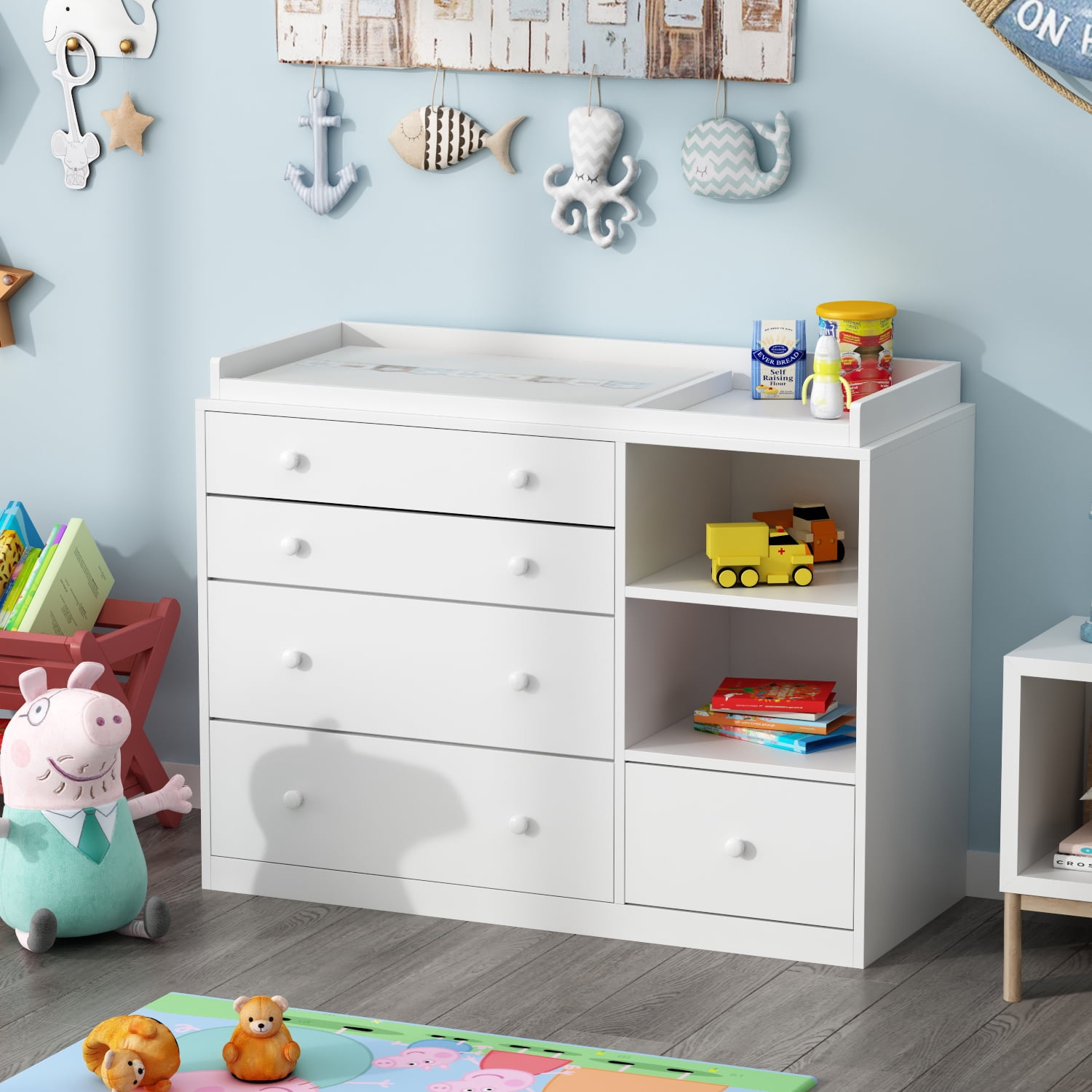
Baby Dressers: A Comprehensive Guide for Parents
Introduction
The arrival of a new baby brings immense joy and excitement, along with a plethora of responsibilities. One of the essential purchases for any nursery is a baby dresser, a versatile piece of furniture that serves multiple purposes. This comprehensive guide will delve into the world of baby dressers, providing valuable information to help parents make informed decisions when selecting the perfect dresser for their little one.
Types of Baby Dressers
Baby dressers come in a wide range of styles and designs, each catering to specific needs and preferences. Here are the most common types:
- Standard Dresser: A traditional dresser with multiple drawers, typically three to six, for storing clothes, diapers, and other baby essentials.
- Changing Table Dresser: A dresser with a removable changing table top, providing a convenient and safe space for diaper changes.
- Hutch Dresser: A dresser with an additional storage unit on top, offering extra space for blankets, toys, or other items.
- Armoire Dresser: A tall, narrow dresser with doors instead of drawers, providing ample hanging space for clothes.
- Convertible Dresser: A dresser that can be converted into a changing table or other piece of furniture as the baby grows.
Materials and Construction
The materials used in the construction of a baby dresser play a crucial role in its durability, safety, and aesthetics. Here are the most common materials:
- Wood: Solid wood dressers are durable, sturdy, and can withstand the wear and tear of daily use.
- Laminate: Laminate dressers are made of particleboard or MDF covered with a decorative laminate, offering a wide range of colors and finishes.
- Metal: Metal dressers are lightweight, easy to clean, and resistant to scratches and dents.
- Plastic: Plastic dressers are affordable, lightweight, and come in a variety of colors and designs.
Safety Features
Safety is paramount when choosing a baby dresser. Look for dressers that meet the following safety standards:
- ASTM F2057: This standard ensures that the dresser is stable and will not tip over when drawers are open.
- JPMA Certification: This certification indicates that the dresser has been tested and meets the safety standards set by the Juvenile Products Manufacturers Association.
- Anti-Tip Device: Some dressers come with an anti-tip device that prevents the dresser from tipping over if it is accidentally pulled or pushed.
Storage Capacity and Organization
The storage capacity and organization features of a baby dresser are essential for keeping the nursery tidy and organized. Consider the following factors:
- Number of Drawers: The number of drawers will determine how much storage space the dresser provides.
- Drawer Size: The size of the drawers will determine what items can be stored in them.
- Drawer Organization: Some dressers have built-in drawer dividers or compartments to help keep items organized.
- Shelves or Cubbies: Some dressers have additional shelves or cubbies for storing larger items or overflow items.
Style and Aesthetics
The style and aesthetics of a baby dresser should complement the overall design of the nursery. Here are some popular styles:
- Traditional: Dressers with classic lines and ornate details.
- Modern: Dressers with clean lines and a minimalist aesthetic.
- Scandinavian: Dressers with a simple, functional design and natural wood finishes.
- Bohemian: Dressers with eclectic patterns, textures, and colors.
- Farmhouse: Dressers with a rustic, distressed finish.
Additional Features
Some baby dressers come with additional features that can enhance their functionality and convenience:
- Built-in Lighting: Some dressers have built-in lighting to illuminate the changing table area.
- Soft-Close Drawers: Soft-close drawers prevent slamming and create a quieter environment.
- Removable Changing Table: Some changing table dressers have a removable changing table that can be used separately.
- Mirror: Some dressers have a built-in mirror for convenience.
Conclusion
Choosing the right baby dresser is an important decision that will impact the functionality and aesthetics of the nursery. By considering the type, materials, safety features, storage capacity, style, and additional features, parents can select a dresser that meets their specific needs and creates a comfortable and organized space for their little one. Remember to prioritize safety and choose a dresser that meets the latest safety standards. With the right dresser, parents can ensure that their baby’s essentials are organized and within easy reach, making diaper changes and dressing a breeze.
